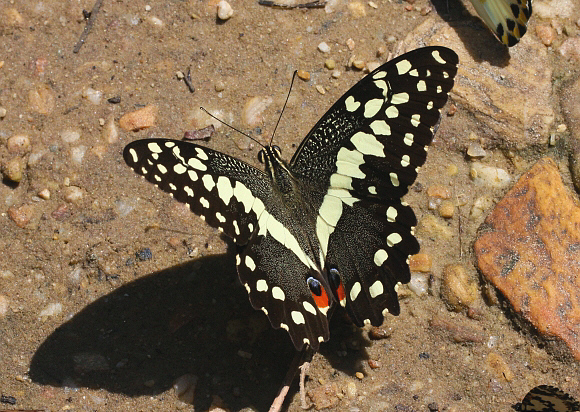
Introduction
There are about 90 known species of Papilionidae in the continent of Africa of which 60 are placed in Papilio – a huge genus comprising of 210 species worldwide.
Papilio demodocus is found across most of sub-Saharan Africa, including Madagascar, and is also found in s.w. Arabia. The butterfly bears a remarkable resemblance to P. demoleus, an Oriental species found from n.e. Arabia to the Philippines, and which also occurs in Australasia. The two species however are not as closely related as their appearance would seem to indicate.
Habitats
The Citrus Swallowtail is found in a wide variety of habitats ranging from semi-desert and acacia scrub to secondary forest, arboreta, parks and gardens. It can be found at altitudes between sea level and at least 1200m.
Lifecycle
The eggs are laid singly on the leaves of the foodplants, which include Teclea, Calodendron, Fagara, Clausena, Toddalia and Vepris. The most frequently used plant however is cultivated Citrus. In dry regions the eggs are laid on Ruta and Haplophyllum. All of the aforementioned plants are members of the Rutaceae. In dry areas Pituranthos and Foeniculum (Apiaceae) are used instead.
Adult behaviour
Males often settle on damp ground to imbibe mineralised moisture, especially in the dry season, but both sexes are more commonly seen when visiting flowers.
In hilly areas the butterflies migrate to the peaks, where courtship and copulation take place. Males sit and bask on bushes, or among tall grasses, often for half an hour or longer. Periodically they take to the wing and then spend several minutes at a time circling around the hilltops, gliding on thermals, but they usually return to the same perching place afterwards.
